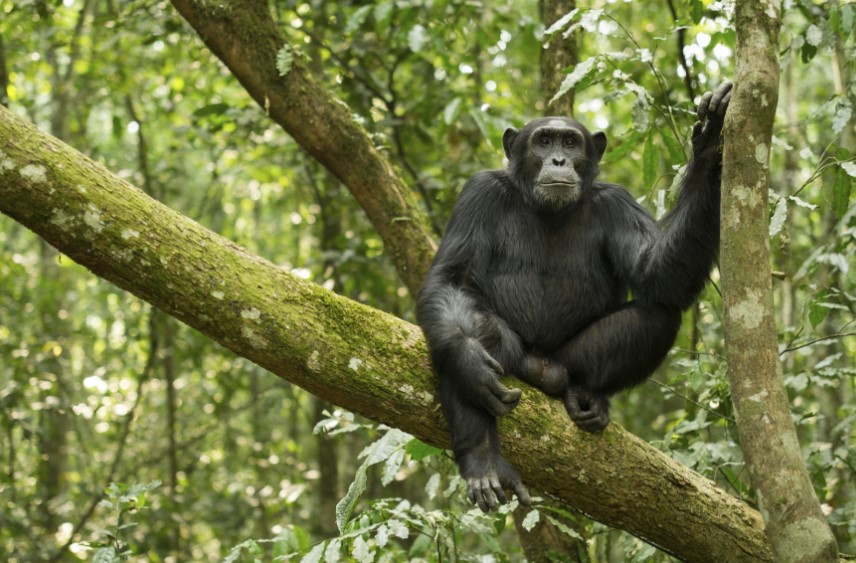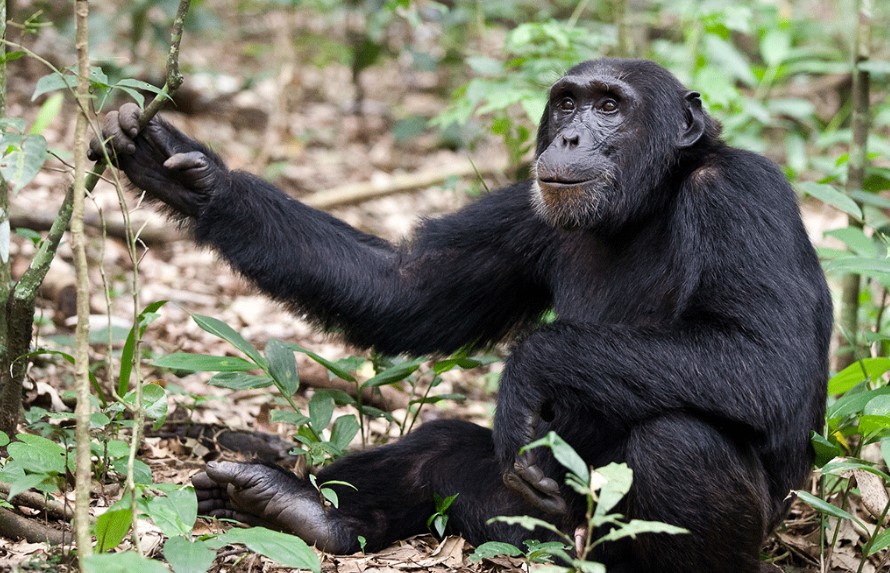Forest Walks In Kibale Forest National Park – Kibale Forest National Park is a breathtaking destination located in southwestern Uganda. It is situated between two towns, Fort Portal and Kamwenge, and covers an area of approximately 795 square kilometers. The national park is famous for its diverse flora and fauna, including over 1,450 chimpanzees and 13 other primate species. Additionally, Kibale Forest is home to over 350 bird species, 70 mammal species, and many species of butterflies and moths.
One of the most popular activities to do in Kibale Forest National Park is to go on forest walks. The park has several nature trails that visitors can explore to get a firsthand experience of the park’s unique ecosystem. These forest walks are guided by experienced park rangers who have extensive knowledge of the flora and fauna in the forest.
One of the most popular trails in Kibale Forest National Park is the Bigodi Wetland Sanctuary trail. This trail is located outside the park and is a community-based ecotourism initiative. The trail takes visitors through a 4.5-kilometer walk around a swamp and a tropical forest. The trail offers a unique opportunity to see a variety of primates, including black and white colobus monkeys, red-tailed monkeys, grey-cheeked mangabeys, and vervet monkeys.
Additionally, visitors can also spot various bird species, such as the great blue turaco, papyrus gonolek, and the white-thighed hornbill. The trail also provides a chance to learn about the local community’s culture, as visitors can interact with the local people and learn about their traditions and ways of life.
Another popular trail in Kibale Forest National Park is the Kanyanchu Primate Walk. This trail is one of the most visited trails in the park and takes visitors through a tropical forest in search of chimpanzees and other primates. The walk usually lasts between two to three hours and is led by an experienced park ranger.
During the walk, visitors can expect to see chimpanzees swinging from tree to tree, black and white colobus monkeys, red-tailed monkeys, and grey-cheeked mangabeys. The Kanyanchu Primate Walk also offers a chance to see other wildlife, such as bushbucks, duikers, and different species of birds.
For visitors looking for a longer forest walk, the Kibale Forest National Park also offers the Chimpanzee Habituation Experience. This experience is different from the regular primate walks as it allows visitors to spend an entire day with the chimpanzees. The Chimpanzee Habituation Experience starts early in the morning and lasts until late in the afternoon.

Visitors follow a team of researchers and park rangers as they track the chimpanzees’ movements and behavior. During the experience, visitors can witness the chimpanzees’ grooming, hunting, and playing activities. The experience offers a unique opportunity to observe the chimpanzees up close and to learn about their behaviors and social structures.
Apart from the primate walks, Kibale Forest National Park also has several nature trails that visitors can explore. The Crater Lake Hike is one of the popular trails and takes visitors through a volcanic crater lake.
The trail is approximately 3 kilometers long and offers breathtaking views of the surrounding forest and crater lake. During the hike, visitors can spot various bird species, such as the African fish eagle and the great blue turaco.
The Bigodi Swamp Walk is another nature trail that visitors can explore. The trail is located outside the park and takes visitors through a wetland ecosystem. The Bigodi Swamp Walk offers a unique opportunity to see various bird species, such as the grey-crowned crane and the papyrus gonolek. Additionally, visitors can spot primates such as red colobus monkeys, black and white colobus monkeys, grey-cheeked mangabeys, and vervet monkeys.
The walk is led by a local community guide who has extensive knowledge of the swamp’s ecosystem and its wildlife.
For visitors interested in birdwatching, the Bird Walk Trail is an excellent option. The trail is located within the park and takes visitors through a tropical forest, offering a chance to spot various bird species, such as the African grey parrot, yellow-billed barbet, and the olive long-tailed cuckoo. The trail is led by an experienced bird guide who can help visitors identify different bird species and provide interesting information about their behavior and habitat.
Forest walks in Kibale Forest National Park provide visitors with a unique opportunity to explore the park’s diverse ecosystem. Visitors can witness the park’s unique flora and fauna up close, learning about their behavior, habitat, and ecological importance. Additionally, the forest walks offer a chance to experience the park’s serene and tranquil environment, allowing visitors to connect with nature on a deeper level.
However, it is important to note that forest walks in Kibale Forest National Park require visitors to be physically fit and to have a reasonable level of stamina. The trails can be challenging, with steep inclines, slippery terrain, and uneven surfaces. Visitors are advised to wear comfortable hiking boots, carry enough water, and dress appropriately for the weather conditions.
In addition to physical fitness, visitors are also required to follow park rules and regulations. For instance, visitors are not allowed to feed or touch the wildlife, carry food or drinks on the trails, or use flash photography. These regulations are put in place to ensure the safety of both visitors and the wildlife, and to maintain the park’s ecological balance.
In conclusion, forest walks in Kibale Forest National Park offer visitors an unforgettable experience of the park’s unique ecosystem. Visitors can witness a variety of primates, birds, and other wildlife, learn about their behavior and habitat, and connect with nature on a deeper level. Forest walks in Kibale Forest National Park provide an excellent opportunity to explore the park’s natural beauty and to appreciate the importance of conservation efforts in protecting our planet’s biodiversity.


Comment (0)